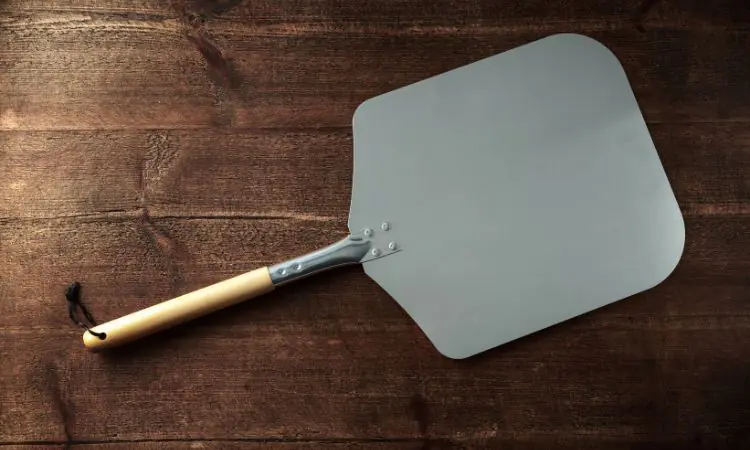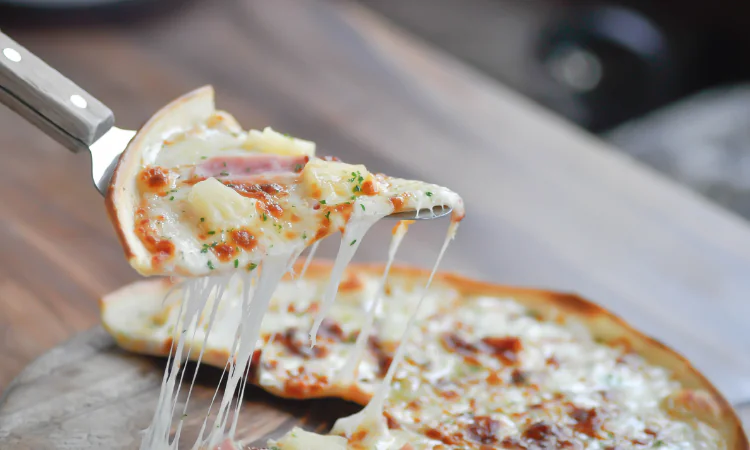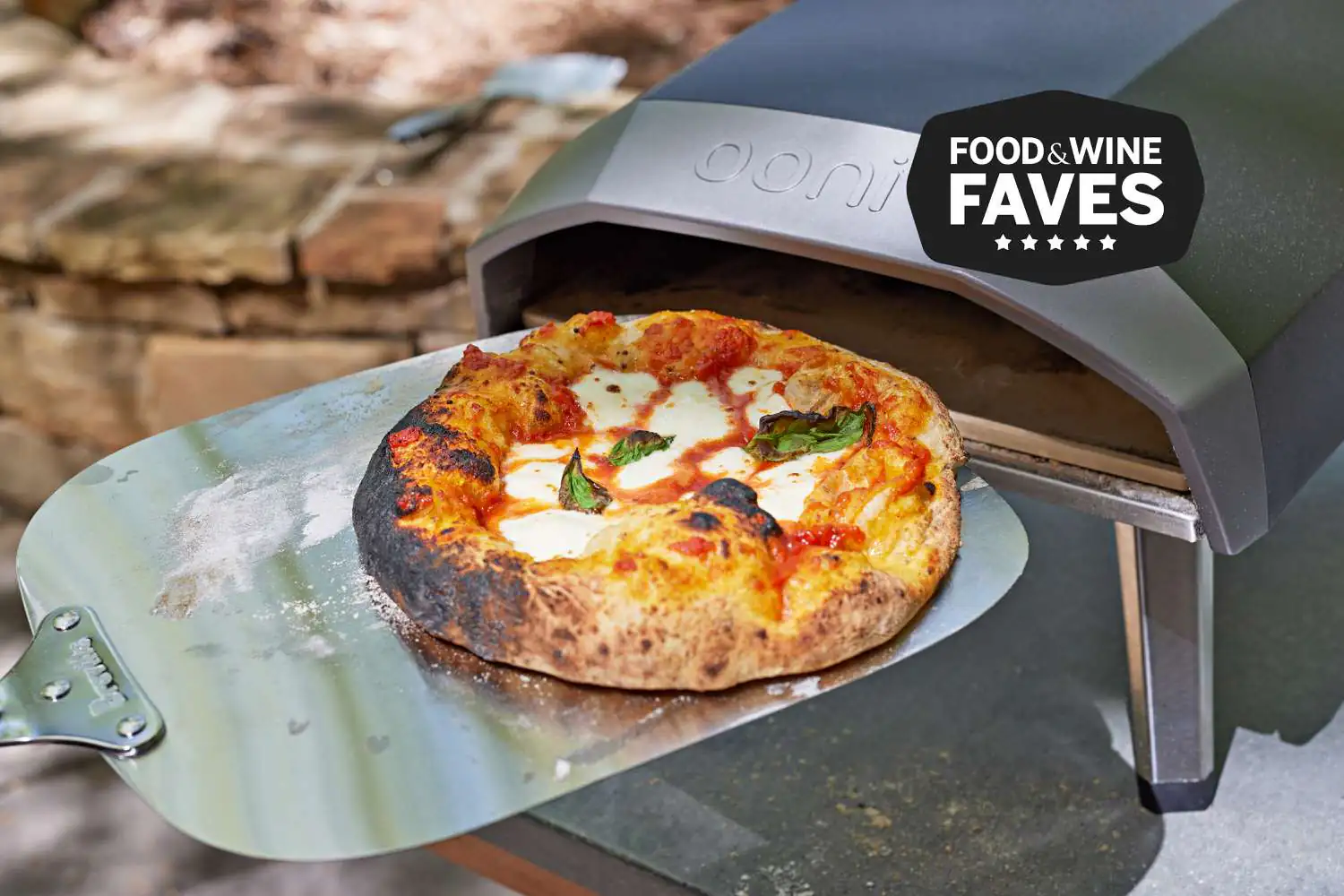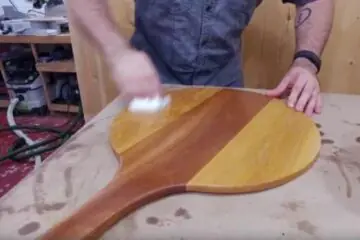When purchasing a pizza peel, consider material and size for easy handling. Durability, handle length, and maintenance are also crucial factors.
Selecting the right pizza peel can enhance your pizza-making experience as an essential tool for safely transferring pizzas to and from a hot oven. The material of the pizza peel is crucial; wood peels offer a natural, traditional feel and are excellent for launching uncooked pizzas, while metal peels, typically aluminum or stainless steel, provide a thinner, more durable option ideal for retrieving cooked pizzas.
Size matters: a pizza peel should be large enough to accommodate your pizzas but small enough for your oven and storage. Handle length impacts control and safety, reducing the risk of burns when reaching the oven. Furthermore, ease of cleaning contributes to its maintenance, ensuring longevity and sanitary use over time. Always prioritize a peel that blends functionality with ease of use, fostering a seamless pizza cooking process.
Selecting The Perfect Pizza Peel Material
A good pizza peel is a pizza maker’s best friend.
It helps slide your pizza into the oven and retrieve it with ease.
Choosing the suitable material for your pizza peel is crucial.
Let’s explore the different materials and their benefits.
Wooden Peels: Rustic And Non-stick
Wooden peels offer a classic, rustic look.
They provide a naturally non-stick surface for uncooked pizza dough.
- It is less likely to stick than metal
- Wood’s insulating properties prevent dough from sticking
Care is simple, with occasional oiling to avoid warping.
Metallic Options: Stainless Steel Vs. Aluminum
| Stainless Steel | Aluminum | |
| Durability | High | Medium |
| Weight | Heavier | Lighter |
| Heat Conduction | Low | High |
| Maintenance | Occasional polishing | Easy clean up |
Choose stainless steel for strength and aluminum for a more lightweight tool.
Need a thinner edge to slide under pizzas? Go with metal.
The Case For Composite Materials
Composite peels blend materials to offer strength and ease.
- Lightweight like wood
- Durable like metal
- Withstand high heat without warping
Composite peels can be the best of both worlds for busy kitchens.
Size And Shape Considerations
Choosing the right pizza peel is crucial for your baking needs. The size and shape of a peel significantly impact ease of use and effectiveness. Consider factors like oven size, pizza style, and safety when selecting. Let’s dive into the details.
Matching Peel Size To Your Oven
The size of your pizza peel should reflect the size of your oven’s interior. A peel that is too large will be clunky and hard to maneuver. A too-small peel won’t support the pizza effectively, leading to potential mishaps. Here’s how to match:
- Measure your oven – Know your oven’s dimensions before buying a peel.
- Leave some space – Ensure clearance around the peel when inside the oven.
- Consider pizza size – Your peel should be larger than the pizza you plan to cook.
Shapes For Different Purposes
Different peel shapes serve various functions. For instance:
| Shape | Purpose |
| Round | Turning pizzas in the oven |
| Square | Removing pizzas and bread |
Select a shape that fits the tasks you perform most often.
Handle Length: Comfort And Safety
The right handle length is a balance of comfort and safety. Here’s why:
- Safety distance – A more extended handle keeps hands away from hot surfaces.
- Control – A handle that fits your arm’s length gives better pizza manipulation.
- Storage – Consider your storage space. Handles differ in length.
Opt for a handle that provides a secure grip and balance while using your oven.
Functional Design Elements
The right pizza peel transforms your baking experience, making pizza smooth and enjoyable. Consider the design elements that marry functionality with ease of use.
Thickness And Edge Design
Selecting a pizza peel with the right thickness ensures your pizza slips off easily onto the baking surface. A thin peel allows for fine control and easy pizza handling, particularly when launching it into the oven.
- A thinner edge slides under pizzas effortlessly.
- Tapered edges help reduce the risk of dough sticking.
The edge design plays a crucial role in the performance of a pizza peel. An angled edge can act as a blade, sliding under your crust effortlessly.
Solid Vs. Perforated Peels
Solid pizza peels offer a classic, unblemished surface suitable for dough transfer. They’re ideal for those who prefer a simple, streamlined tool for their pizza-making needs.
On the other hand, perforated peels excel by allowing excess flour to fall away, preventing burns and ensuring a perfect crust. This design also reduces friction, making pizza handling smoother.
Ease Of Storage: Foldable Handles
Storage is often an overlooked aspect of choosing the right pizza peel. A foldable handle can be a game-changer for home kitchens with limited space.
- Peels with foldable or detachable handles make storage uncomplicated.
- Some designs allow you to hang the peel, saving drawer or shelf space.

Durability And Maintenance
Choosing a pizza peel isn’t just picking the right size or shape. Durability and maintenance are crucial for long-term satisfaction. High-quality materials ensure a peel’s longevity, while ease of care contributes to its upkeep. This section explores what every pizza lover should know about the durability and maintenance of pizza peels.
Lifespan Of Materials
Pizza peels come in various materials, each with a different lifespan. Wooden pizza peels are classic and can last many years with proper care. Metal peels, made from aluminum or stainless steel, boast even more excellent durability and are less prone to cracking.
| Material | Pros | Cons |
| Wood | Natural feel gentle on pizzas | Requires more maintenance |
| Aluminum | Lightweight, durable | Can bend under heavy use |
| Stainless Steel | Very durable, easy to clean | Heavier, more expensive |
Care And Cleaning Best Practices
To maintain a pizza peel’s optimal condition, regular cleaning is vital. Wooden peels should never be soaked and require a simple wipe with a damp cloth. Metal peels can be cleaned with warm, soapy water.
- Wipe wood peels with a damp cloth
- Wash metal peels with soapy water
- Avoid dishwashers for wood
- Dry thoroughly after cleaning
Preventing Wear And Tear
Proper handling and storage prevent undue wear and tear. Store peels in a clean, dry area. Handle with care to avoid drops and dings. With these precautions, any pizza peel can withstand the test of time.
- Store in a dry place
- Avoid dropping or rough handling
- Treat wood with food-safe oil periodically
- Inspect metal peels for warping or damage
User Experience And Reviews
A pizza peel is essential for any pizza lover or home chef. But with countless options available, what should buyers consider? A peek into user experience and reviews can provide invaluable insights. Let’s delve into what actual users say about their pizza peels, touch on handling and performance feedback, compare and recommend top choices, and balance cost against quality for the best value buy.
Handling And Performance Feedback
Handling and performance feedback is crucial in gauging a pizza peel’s effectiveness. Users often share their experiences regarding the peel’s grip comfort, weight, and maneuverability. Assess whether the peel can effortlessly slide under the pizza and how well it can handle the heat. Read through customer experiences to get a sense of the peels:
- Sturdiness while transferring pizzas.
- The balance between flexibility and rigidity.
- Material endurance under high temperatures.
Comparisons And Recommendations
In the quest for the perfect pizza peel, considering comparisons and recommendations by other users stands out as a guiding beacon. Compare features like:
- Size variations – Tailored to different oven sizes.
- Material differences – Wood vs. metal peels.
- Design aspects – Perforated vs. solid surfaces.
Look for recommendations with high-star ratings and positive testimonials to inform your decision.
Cost Vs. Quality: Finding Value
Finding the right balance between cost and quality is the key to a value purchase. A high-quality pizza peel doesn’t necessarily have to break the bank. Evaluate features like:
- Material longevity – Will it last many pizza nights?
- Performance – Does it deliver consistent results?
- User satisfaction – Are buyers happy long-term?
Warranty and after-sales service are also indicators of a product’s worth.


Frequently Asked Questions Of What To Look For When Buying Pizza Peel
What Is The Best Coating For Pizza Peel?
The best coating for a pizza peel is dusting semolina flour to prevent sticking.
Is Stainless Steel Or Aluminum Better For A Pizza Peel?
Stainless steel pizza peels are more durable and robust, while aluminum peels are lighter and easier to handle.
Is A Metal Or Wooden Pizza Peel Better?
Metal pizza peels excel with cooked pizzas due to their thinness and non-stick properties. Wooden peels are best for launching raw dough.
Is A Solid Or Perforated Pizza Peel Better?
A perforated pizza peel is ideal for high-temperature ovens, reducing scorching by allowing excess flour to fall off. Solid peels work better at lower temperatures, at home, or in electric ovens.
Conclusion
Selecting the ideal pizza peel elevates your pizza-making game. Remember, material matters – wooden peels for prep and metal for the perfect slide-out. Size and handle length are essential for ease and safety. A good pizza peel is a blend of functionality and durability.
Invest wisely, and your pizza nights will thank you. Happy baking!

As the author of the “Ultimate Pizza Guide: Recipes, Tips & Secrets Revealed,” I’m dedicated to sharing my love for pizza and empowering others to create delicious homemade pizzas with ease. Join me on a journey to uncover the secrets to perfecting your pizza game!



